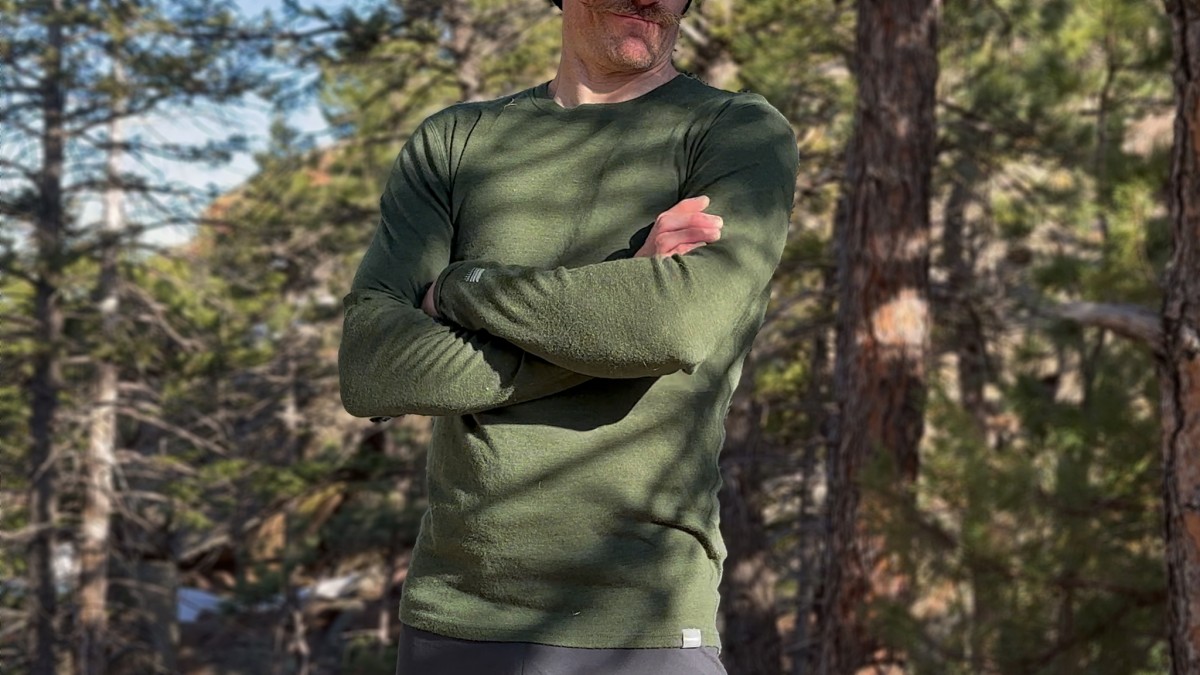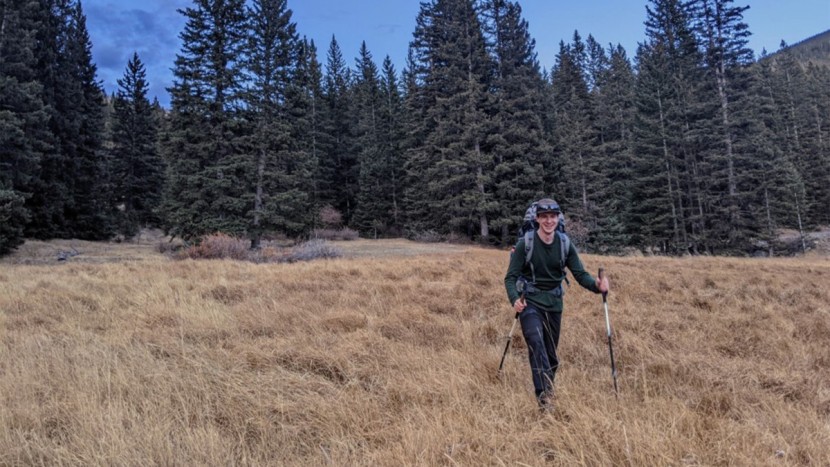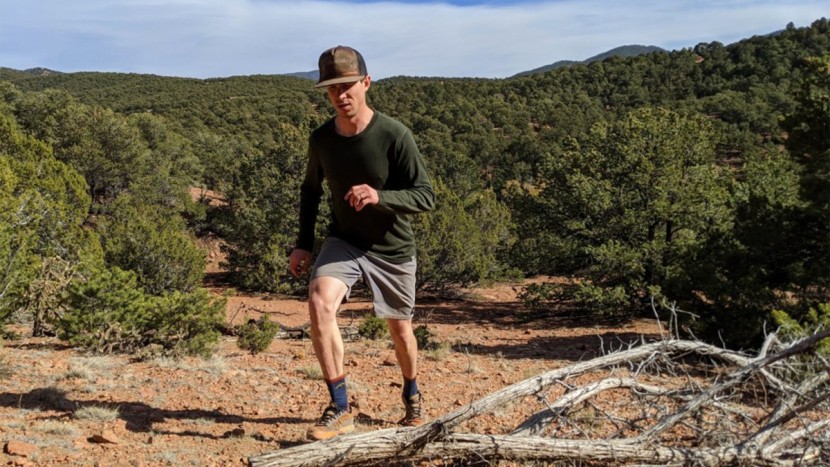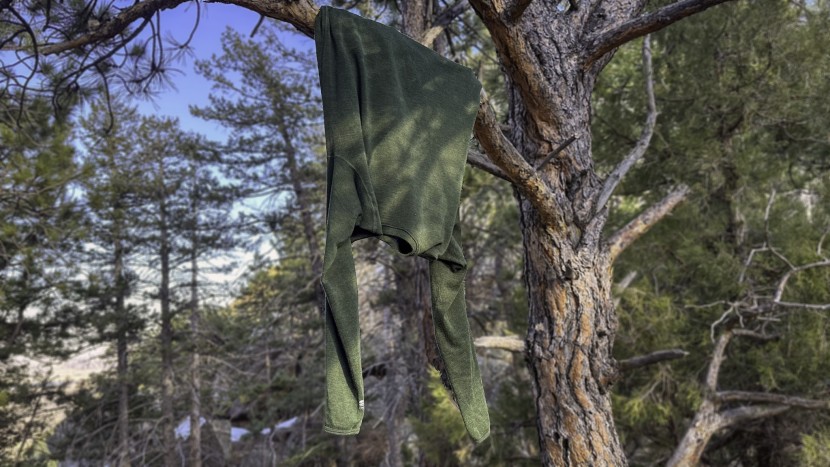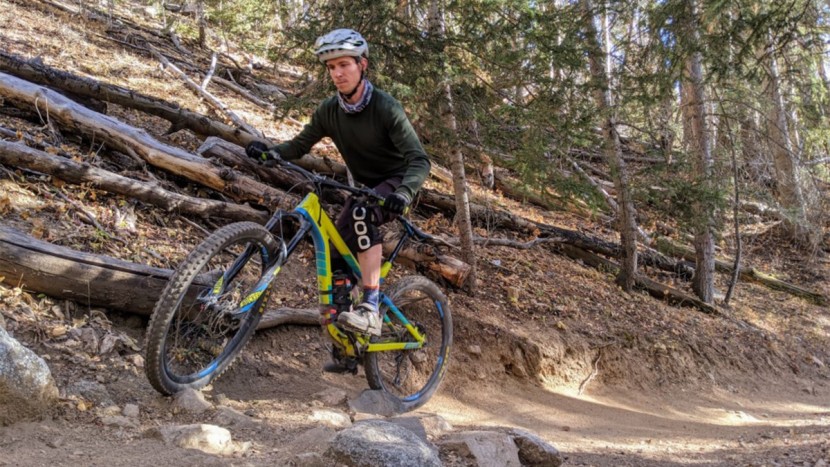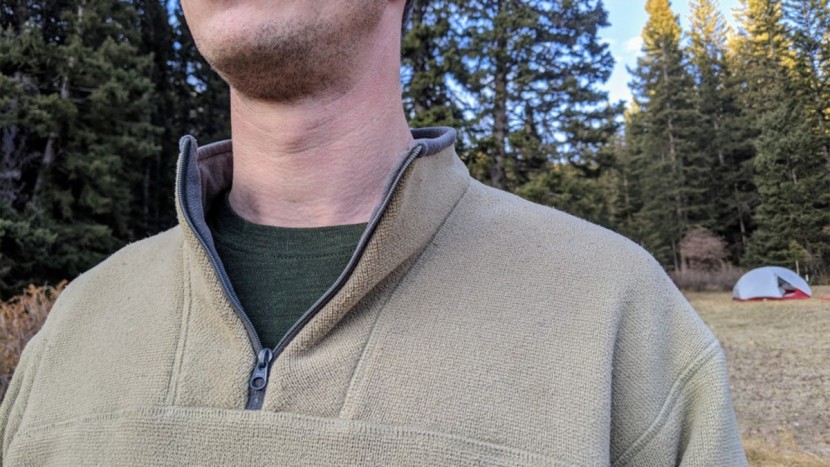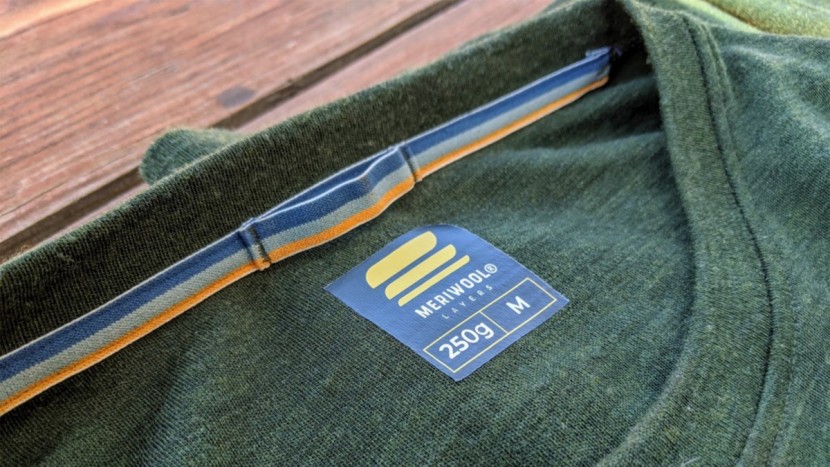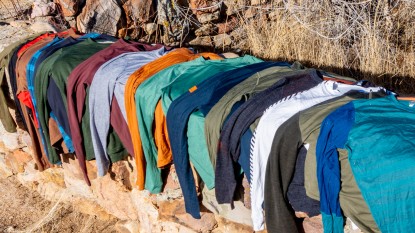Our Verdict
Compare to Similar Products
 This Product
Meriwool Merino 250 Long Sleeve | |||||
|---|---|---|---|---|---|
| Awards | Excellent Value for Cold Winter Days | Best Synthetic Bang for Your Buck | A Comfy, Inexpensive Option for Non-Technical Use | Best Value for Merino | |
| Price | $60 List $59.99 at Amazon | $60 List $59.95 at REI | $35 List $27.82 at Amazon | $50 List $49.99 at Amazon | $13.00 List $12.99 at Amazon |
Overall Score  |
|||||
| Star Rating | |||||
| Bottom Line | A fine Merino base layer at an entry-level price point | Reach for this base layer when the temperature drops to wear underneath your jacket | Grab this base layer if you're looking for a top made of a soft polyester that still performs | An excellent lightweight, tight-fitting 100% merino base layer for summertime duties | This base layer complements a rough-and-tumble outside job while keeping you warm |
| Rating Categories | Meriwool Merino 250... | REI Co-op Midweight... | Carhartt Base Force... | Merino.tech Crew | Access Heavyweight... |
| Warmth (25%) | |||||
| Breathability (20%) | |||||
| Comfort and Fit (20%) | |||||
| Durability (15%) | |||||
| Drying Speed (10%) | |||||
| Layering Ability (10%) | |||||
| Specifications | Meriwool Merino 250... | REI Co-op Midweight... | Carhartt Base Force... | Merino.tech Crew | Access Heavyweight... |
| Measured Weight (Size Large) | 8.6 oz | 10.0 oz | 9.3 oz | 6.8 oz | 12.8 oz |
| Fabric Weight Class | Midweight | Midweight | Midweight | Lightweight | Heavyewight |
| Material | RWS Merino wool | 92% recycled polyester, 8% spandex | 100% polyester | 100% Merino wool | 65% Cotton, 35% Polyester |
| Fit | Slim fit | Semi-fitted | Loose | Semi-fitted | Loose |
| Measured Shirt Length (Size Large) | 30.0 in | 29.0 in | 28.5 in | 29.0 in | 28.0 in |
| Thumb Loops | No | Yes | Yes | No | No |
| Air Dry Test | 65 min | 55 min | 46 min | 55 min | 72 min |
| Dryer Safe | No | Yes, tumble dry low | Yes, tumble dry medium | Yes, tumble dry low; recommended lay flat to dry | Yes, tumble dry low |
| Odor Control Fabric | Naturally odor resistant | None | Anti-odor treatment | Naturally odor resistant | None |
| UPF Sun Protection | 50+ | 50 | None listed | 25 | None listed |
| Seam Stitching | Flatlock seams | Flatlock seams | Flatlock seams | Overlock seams | Overlock seams |
| Shoulder Top Seams | Yes | No | No | Yes | Yes |
| Drop Tail Hem | No | No | Yes | Yes | No |
| Available Cuts | Crew, 1/2 zip | Crew, 1/2 zip | Crew | Crew, v-neck | Crew |
Our Analysis and Test Results
As a relative newcomer to the Merino scene, Meriwool produces high-quality base layers at an affordable price point that stands in direct contrast to much of the marketplace. The Meriwool Merino 250 is a competitive 100% Merino base layer with a midweight-standard fabric weight of 250 g/m².
Warmth
As soon as I lifted it from the box, I had a hunch that this was a base layer able to stand up to even the best of the competition. Although the 250 g/m² fabric weight puts the Merino 250 at the heavier end of our midweight selection, actually wearing this top suggests otherwise. It feels curiously more lightweight than similar tops, and I found it more adept at thermoregulation than most. Even on warm fall trail runs with lots of vertical gain, I never overheated while wearing this as a single layer. As the seasons transitioned, I had no issues waking up and walking through frosty fields while backpacking in the alpine.
Despite the relatively similar fabric weight to other tops we tested, it does seem that the extra-fine Merino chosen to knit this layer makes a difference when it comes to warmth. It is not as warm as its direct competitors — I was noticeably colder, particularly when wearing this layer as a standalone top. For shoulder-season activity and into the winter, this is a great option. But don't be surprised if it comes up a bit short on the coldest days in the deep of winter.
Breathability
Where this top falls a bit short in terms of overall warmth, it picks back up regarding thermoregulation thanks to impressive breathability. Merino wool is known for its incredible moisture-wicking ability and the efficiency with which the fabric passes sweat from the inside to the outside for evaporation. The extra-fine Merino yarns chosen for the weave of the Meriwool Merino 250 only improve that efficiency. For intense training sessions in cool-to-cold weather, this base layer pairs effectively with a lightweight shell, like a windbreaker.
With a density of 250 g/m², this layer performs much more similarly to those midweight base layers on the lighter end of the spectrum (around 200 g/m²). As breathability tends to trend oppositely to warmth, it is no surprise that the small tradeoff the Meriwool makes in terms of warmth, it gains back in breathability. If you plan to be working hard — whether cross-country skiing or chopping wood — this top is an excellent alternative to thicker baselayers we tested at the same or similar fabric weight.
Comfort and Fit
Plush, but not too thick; soft, but not too delicate — the Meriwool Merino 250 seems to find that Goldilocks zone of comfort. My heart sank a little when I first wore the Meriwool Merino 250 because I felt a little itchy, but once I wore it a bit and after a wash, the fabric began to soften and became far less of an issue.
Flatlock seams across the majority of this top (with the exception of the hem) ensure that the seams won't rub when worn next to the skin. In the future, we hope that Meriwool updates this otherwise well-designed piece with off-the-shoulder seams. But this slight criticism was only noticeable under the weight of a heavy backpacking pack.
This top has a slim, athletic, and yet stylish fit that is as suited to a day on the mountain as heading into town. It appears to fit very true to size — a size Large perfectly suited my 5'11", 185lb athletic frame. I particularly appreciate that the well-cut arms end in cuffs supported by a slight elastic band. Unlike other tops in this review, the cuffs maintained their true shape longer, even when I continued to pull them up over my forearms.
Drying Speed
What makes the Merino 250 a standout among otherwise very similar midweight options is the extra-fine spun Merino wool. As with increased breathability, this also translates to slightly faster drying times. Although it is not nearly as quick-drying as the lightweight summer layers, there is a noticeable difference compared to its direct competition.
Indeed, the laboratory results from our soak n' dry test translated to what I experienced in the field while wearing this top as a base layer. Moisture was quickly wicked up and efficiently evaporated, keeping me dry and comfortable even through intense activity. The only exception to this was when backpacking — but without a suspended frame backpack, is it even a reasonable assumption that you can end the day without a sweaty back?
Durability
We had some initial doubts about the durability of this layer, again based on the underlying difference of the extra-fine spun Merino wool. As a natural fiber, Merino is not normally categorized as one of the more durable options for athletic attire. But through years of field testing wear-and-tear, we are coming around to a sense that this is more of a generalization.
Like other Merino tops tested, after our overly-aggressive abrasion test, the Meriwool showed some notable rips and tears. In the real world, some lumps and bumps were accrued mountain biking in this top. That said, thanks to flatlock seams backing up the high-quality construction of this layer, it is more likely to meet an early fate through improper washing and drying than it is through outdoor activity — as long as you keep the rubber side down and don't manage to land upside down in a tree.
Layering Ability
I received more than one compliment when wearing this top as a standalone piece. As a slim cut base layer, the Merino 250 layers well underneath most mid-layers, from sweaters to lightweight puffy jackets. I felt like it offered a comfortable range of motion in every circumstance, making it both versatile and practical. The fine Merino wool may catch on the scratchier mid-layers or tough canvas jackets.
I found that even while wearing a t-shirt underneath, the upper arms become way too tight, verging on the point of restricting some particular movements. This isn't a problem specific to the Meriwool, but we tested other similarly weighted tops that were cut a bit looser and didn't present this problem.
Should You Buy the Meriwool Merino 250 Long Sleeve?
For the price of entry, this layer is truly exceptional: a quality, 100% Merino wool base layer at a fraction of the cost of every other Merino layer we tested and researched. I'm happy and a little surprised to report that this top's performance exceeds its price tag, offering great value and more affordable thermoregulation. At the end of the day, I like to keep things simple. I want gear that works without too much fluff. The Meriwool Merino top accomplishes this objective perfectly. Other tops may have more performance-driven features, but this one delivers on quality at a reasonable price. If you're looking to experience for yourself just why Merino products are hyped as must-haves when it comes to technical base layers, the Meriwool Merino 250 is an excellent choice to seriously consider.
What Other Base Layers Should You Consider?
If the warmth of the Meriwool is what's most appealing to you and you're looking to level up your warmth game in comfort and fit especially, you can't go wrong with either the Smartwool Classic Thermal Merino 1/4 Zip or the Ortovox 185 Rock'N'Wool Long-Sleeve. Compared to the Meriwool, the price difference for either of these phenomenal tops is not insignificant, especially if you're just getting cozy with the Meriwool's affordability. If your budget doesn't budge that much, consider a slightly lighter base layer like the REI Co-op Merino 185 Long-Sleeve Half-Zip, an extremely well-crafted base layer that should last through many seasons of use. If the durability of a wool base layer in general is a concern, the synthetic Under Armour ColdGear Base 4.0 Crew is a warm base layer that can take a lot more abuse than any other thermal base layer we've tested.


